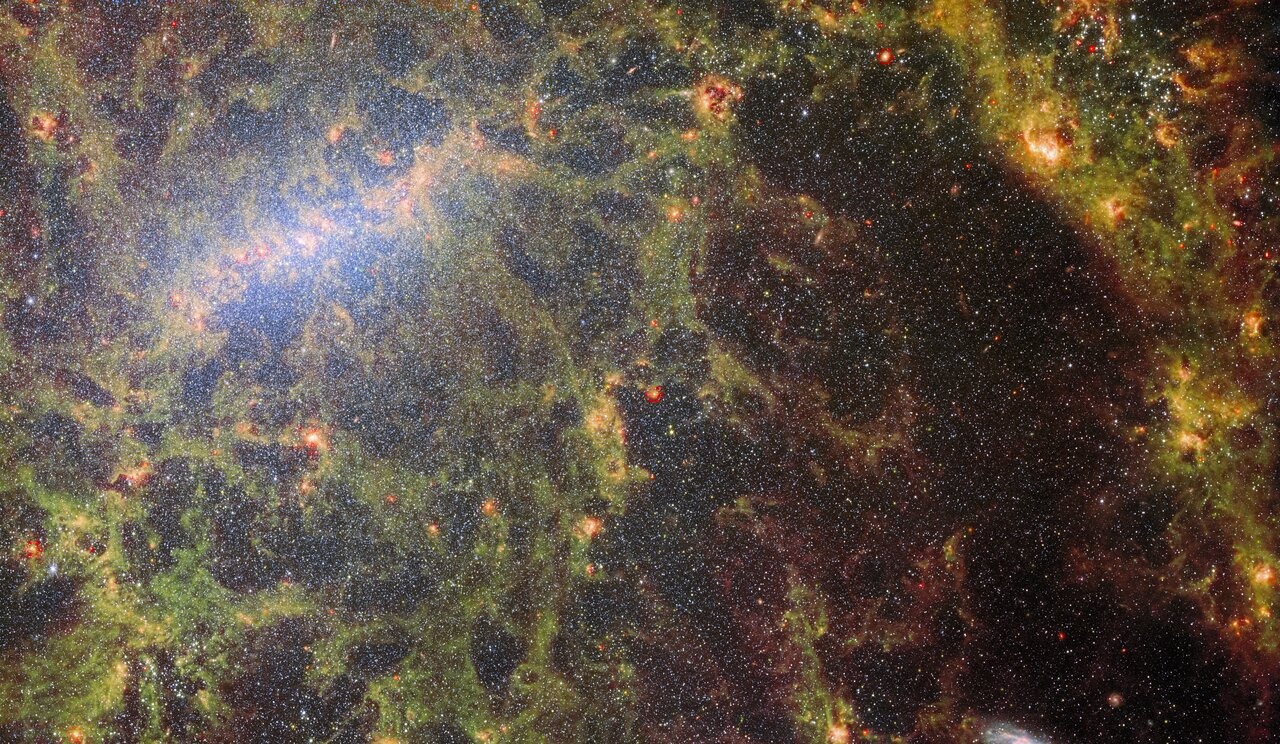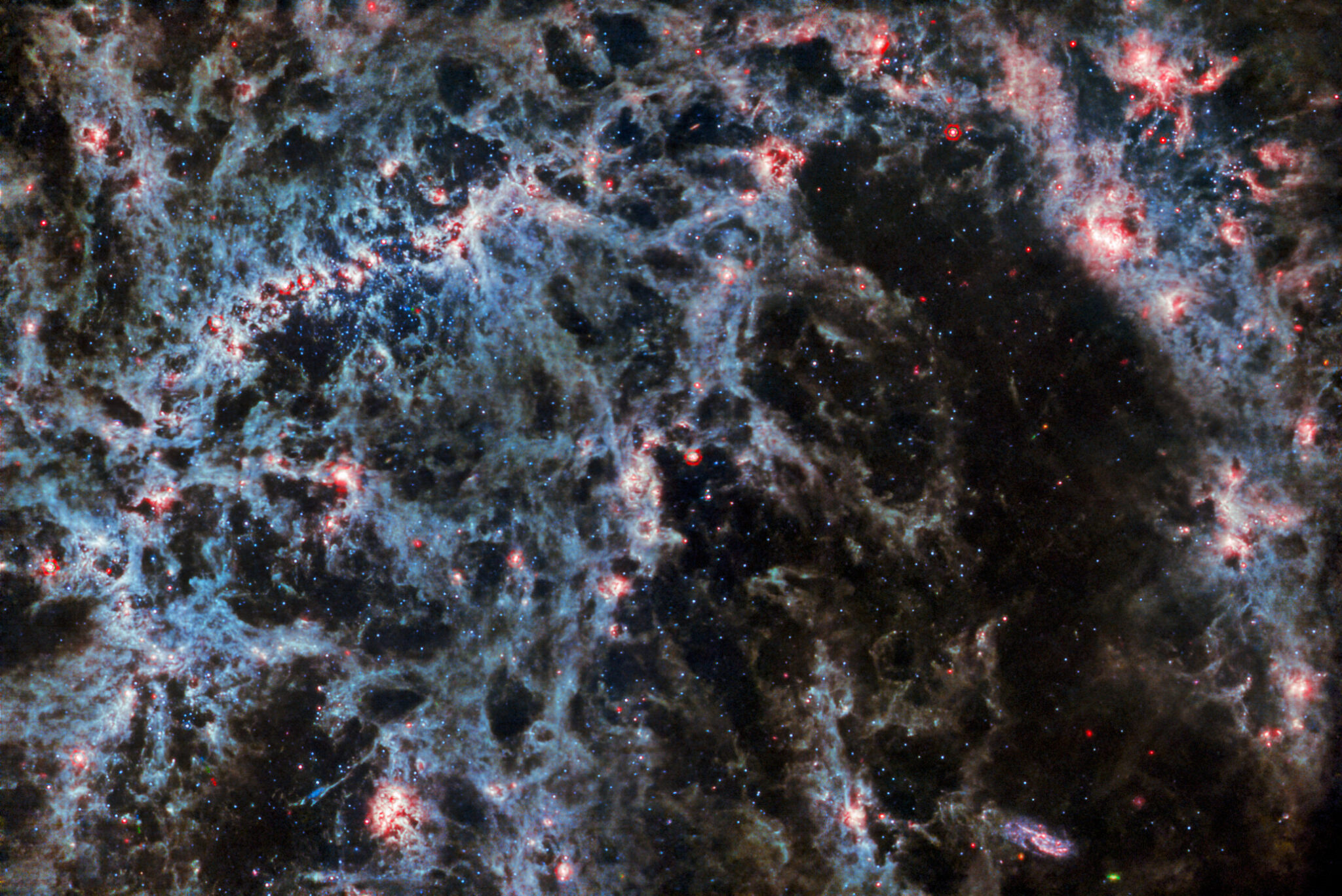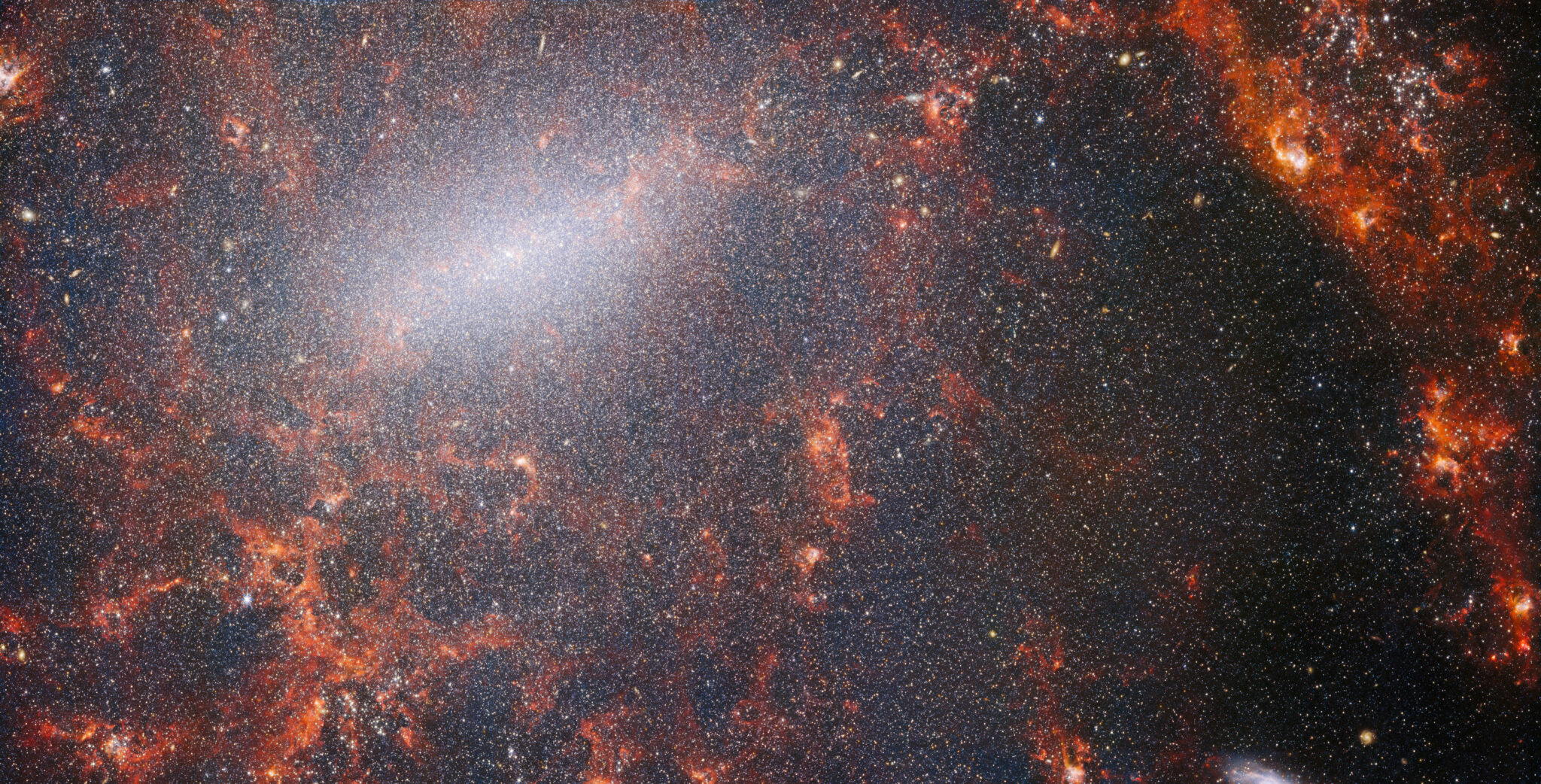The latest photo from the James Webb Space Telescope (JWST) shows a stunning picture of dust and stars that form a bar of the colorful spiral galaxy NGC 5068, located 17 million light-years away from us. Like our Milky Way, this galaxy has a central band, which is a more concentrated region of stars and dust compared to the arms extending from the center of the galaxy.

The image was taken using two James Webb instruments – a mid-infrared instrument (MIRI) and a near-infrared camera (NIRCam). By looking at the image in the middle and near infrared ranges, JWST can highlight features such as dust and gas vortices, as well as stars in this region, with the band of the galaxy glowing in the upper left corner of the image.

The band of a spiral galaxy is usually an active star-forming region, so this image was collected as part of a study of star formation in neighboring galaxies. The Physics at High Angular resolution in Nearby GalaxieS (PHANGS) project involves the James Webb and Hubble space telescopes, as well as other ground-based telescopes such as the Very Large Telescope (VLT) and the Atacama Large Millimeter/Submillimeter Array. This study makes it possible to obtain high-resolution images of star formation regions.

“For this project, Webb collected images of 19 nearby star-forming galaxies which astronomers could then combine with catalogues from Hubble of 10 000 star clusters, spectroscopic mapping of 20 000 star-forming emission nebulae from the Very Large Telescope (VLT), and observations of 12 000 dark, dense molecular clouds identified by the Atacama Large Millimeter/submillimeter Array (ALMA),” write scientists.
James Webb is particularly useful for studying star formation because it operates in the infrared wavelength range. This allows its instruments to see through dust clouds that would be opaque in the optical spectrum. In the resulting photo, dust is represented in green, while interstellar gas bubbles are shown in red.
Earlier we reported on how galaxies with partitions existed 11 billion years ago.
According to esawebb.org
Follow us on Twitter to get the most interesting space news in time
https://twitter.com/ust_magazine
